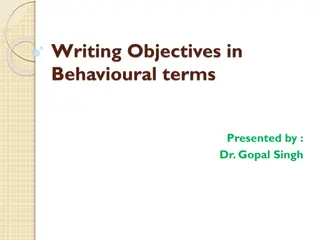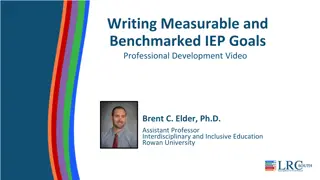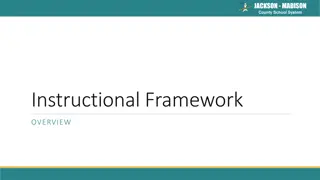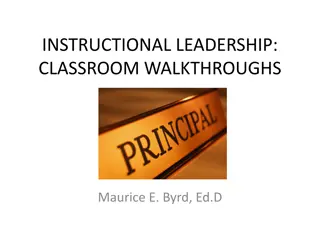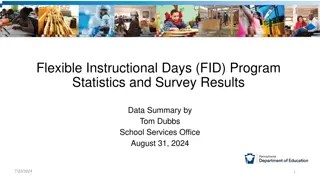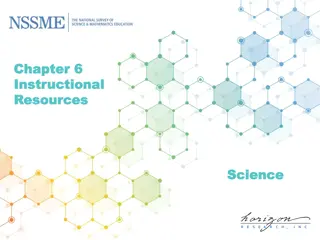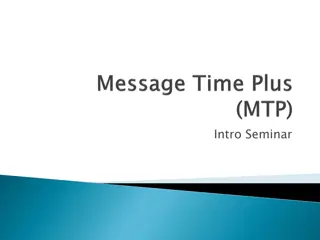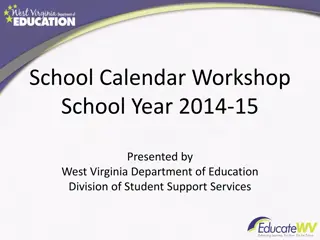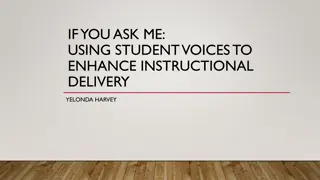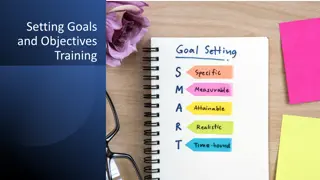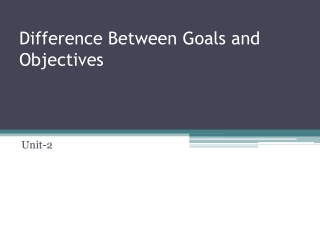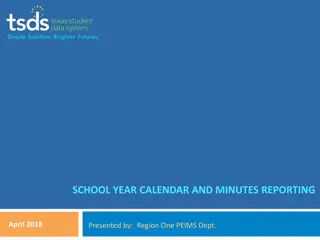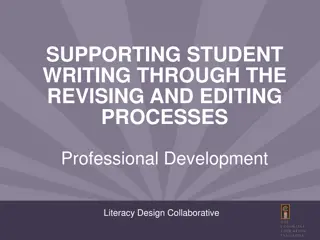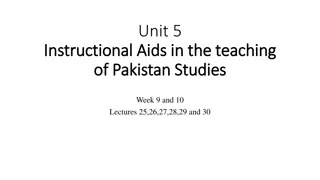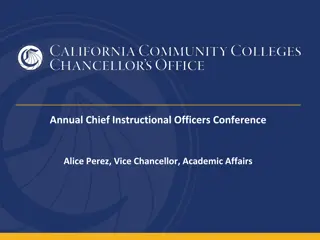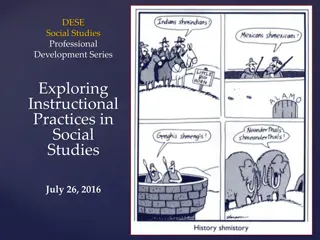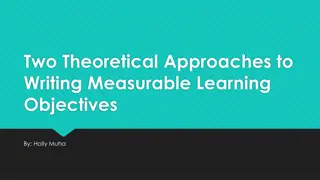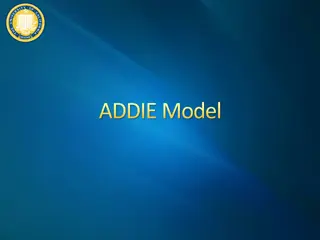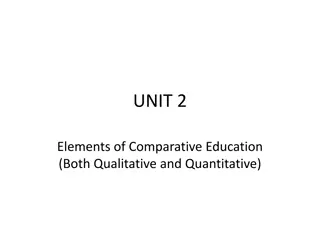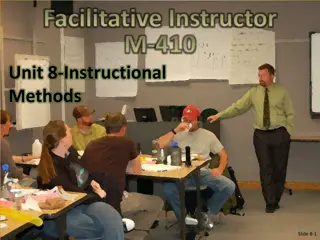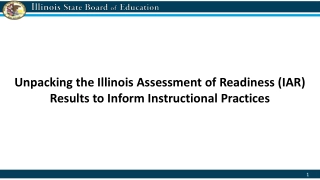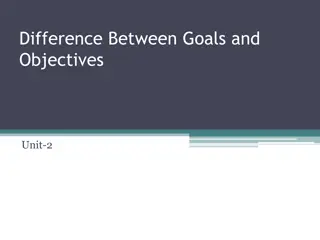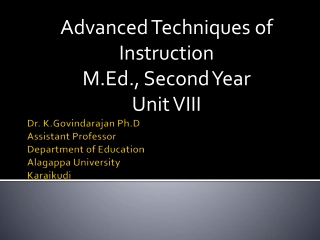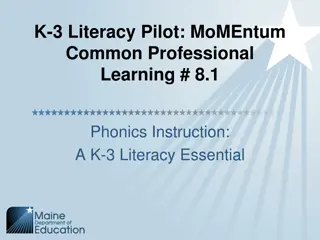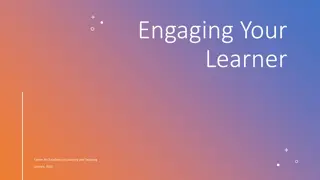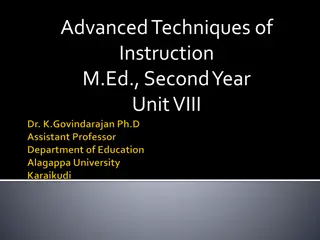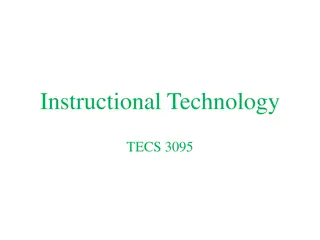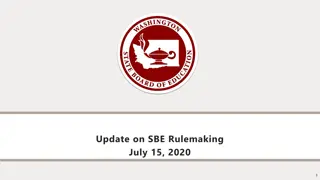Writing Effective Instructional Goals and Objectives in Education
Determine the importance of setting clear instructional goals and objectives for effective lesson planning in education. Explore the difference between goals and objectives, understand how to write instructional goals, and learn to create specific, measurable instructional objectives for student achievement. Discover essential tips for crafting actionable objectives using the ABCD method in the teaching process.
Download Presentation

Please find below an Image/Link to download the presentation.
The content on the website is provided AS IS for your information and personal use only. It may not be sold, licensed, or shared on other websites without obtaining consent from the author. Download presentation by click this link. If you encounter any issues during the download, it is possible that the publisher has removed the file from their server.
E N D
Presentation Transcript
Writing Effective Instructional Goals and Objectives Dr. Rob Danin English Language Specialist www.robdanin.com
Goals and Objectives Why bother? When developing a lesson plan the teacher has to determine what they want the student to learn. Student G&O s help the teacher to determine if the students have learned what is taught. Learning objectives are also called instructional objectives or behavioral objectives. They are necessary for the high- quality development of instruction (lesson planning). There is a difference between G&O s! Student will be able to (SWBAT) will be able to (SWBAT)
Instructional Goals Goals are broad, generalized statements about what is to be learned. Think of them as a target to be reached.
Examples of Instructional Goals Students will understand how to identify a compound word. Students will know appropriate language variety, register and genre. Students will learn grammatically correct phrases. Students will use English to participate in social interactions by ________________. Students will identify a specific letter, word, or picture [by pointing to or circling it].
Instructional Objectives Specific actions the teacher takes during their instructional delivery . Actual teaching of the lesson Align directly to instructional assessments. Confirms the teacher has met their overall lesson goals (Backward Design) They are specific and measurable, rather than broad and intangible. Actions (use of verbs in writing objectives) that clearly answer the question What is the student Tip appreciate, etc. in an objective. They are too vague, and do not measure a specific behavior. These are okay to use in lesson goals. What is the student doing? Tip: Never use words such as understand, doing?
The S Student tudent W Will (SWBAT) ill B Be e A Able (SWBAT) ble T To o Here are some objectives that relate to actual student performance (SWBAT). These examples relate to specific, measurable student outcomes: SWBAT: write a resume. state three types of verbs. add two words together to make a compound word. Explain what the problem is with this example of an objective Students will be taught three types of verbs. This objective is too broad, and is concerned with the teaching process, not the learning process (SWBAT).
How To Write Instructional Objectives The ABCD's of Learning Objectives Instructional objectives should specify: A Audience B Behavior able to do? This should be an observable behavior. If you can't observe it, you can't be sure your students really learned it. C Condition learning occur? What will the student be given or already be expected to know to accomplish the learning? SWBAT prepare a four to six minute extemporaneous speech, given a maximum of six references. D Degree Do you want total mastery (100%), do you want them to respond correctly 80% of the time, etc. A common (and totally non-scientific) setting is 80% of the time. udience - Who? Who is the instruction aimed at? ehavior - What? What do you expect the students to be ondition - How? Under what circumstances will the egree - How much? Must a specific set of criteria be met?
Instructional Objectives: Poor Examples Why are these poor examples: Students will understand English. understand is not specific and measurable Students will develop an appreciation of music. appreciation is not specific and measurable The teacher will conduct a lecture on proper noun usage. Focuses on the teacher, not the students Remember: SWBAT!
Instructional Objectives: Good Examples Why are these good examples: SWBAT: act out verbal phrases. i.e., Igor appears happy. write a letter. correctly solve at least 8 out of 10 true/false questions. Act out, write and correctly solve [8/10] are observable and measurable behaviors.
A Quiz! Analyze this objective using the ABCD's of Learning Objectives The student will be able to write the noun and verb, within a standard English sentence, without error. A Audience? Student B Behavior? Write C Condition? A standard English sentence D Degree? Without error
The Objective of this Presentation? The participant will be able to write proper lesson goals and objectives without error. www.robdanin.com


